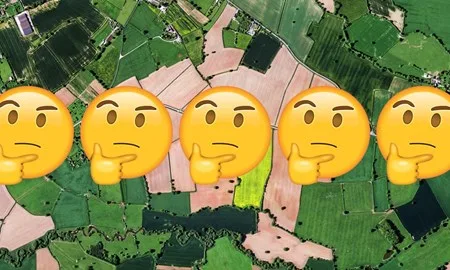
Ever wondered how much land is used for farming in Britain, or exactly what we produce here in the UK? Get the key farming facts in our informative infographic.
Author
| 28th October 2019Farming Facts: 19 Intriguing Insights About UK Agriculture
With our new Farming Facts infographic, we’ve aimed to answer all your most pertinent questions about the farming industry, from ‘How much money’s being made?’ and ‘What’s top of the crops?’ to ‘Exactly how many hedges are we talking?’

Here’s a breakdown of some of the most interesting insights our research uncovered, as well as a bit of background to put them into context.
Farming is about more than just crops – it generates money in a myriad of ways
Our farms do much more than provide us all with food – they also boost our overall financial prosperity.
For every £1 invested in farming here, £7.40 is delivered back into the economy. And the rolling fields of agriculture also help the UK attract £21 billion through tourism every year, with 20% of international visitors taking a trip to the countryside during their stay. It’s not just foreign visitors heading for the hills, either – two-thirds of British people make at least one visit to the countryside each year.
Never underestimate the humble tractor
As our infographic shows, tractors help to significantly reduce the amount of people needed to run a farm successfully, yet statistics from AEA reveal that the amount of new tractors being registered was actually on the decline until early 2017. Pleasingly, though, things are now on the up, with the amount of new registrations increasing month-on-month – a sure sign that the UK farming industry is flourishing. John Deere is the most popular brand here in the UK, closely followed by CNH.
Technology is taking over
While old-school farming machinery still plays a vital role, the farming sector is also benefiting from the latest developments in technology. The UK agri-tech sector contributes £14.3 billion to the UK economy and employs 500,000 people, with companies and researchers developing pioneering smart farming technologies from drones to 3D printing.
In February, Business Secretary Greg Clark announced a new £90 million farming tech investment designed to bring together AI, robotics and earth observation to improve supply chain resilience in the agri-food sector and secure the future of farming. It’s thanks to these kind of advances that the UK farming industry grew by 10 per cent between 2014 and 2017.
East Anglia is our agricultural hub
With a climate, landscape and soil that’s ideally suited to agriculture, East Anglia is our top crop-producing region. More than 39,000 people work directly in the farming sector here, producing enough barley to brew 2.5million pints of beer and growing enough wheat for 5,774 million loaves of bread a year.
We’re a nation of bread lovers…
As you can see from the infographic, the average UK citizen gets through a massive 43 loaves of bread a year. That amounts to an awful lot of toast, right? Interestingly, though, around 24m slices of bread are thrown away every day in the UK, so, while we may love our bread, we’re also chucking away a ton of it. Anti-waste charity Love Food Hate Waste are encouraging people to freeze bread and toast it straight from the freezer, and to consider eating toast as a snack to reduce the amount of unused bread that gets thrown out.
…but we love our spuds even more
Chipped, baked, mashed or fried, we simply can’t get enough of the wonderful potato here in the UK. We produce 5.5 million tonnes – that’s £897 million’s worth – of them ourselves each year, as well as importing 1.3 million tonnes. Our production of potato crops in England and Wales peaked in 1948 at almost 400,000 hectares. And though numbers have dropped off since, we’re actually ranked number 11 among world potato-producing countries.
Hedges are incredibly interesting
Yes, that’s a fact! Here are a few things you probably never knew about hedges here in the UK to prove it. Firstly, there are a lot of them – nearly 500,000 miles’ worth, in fact, which is enough to circle the earth 20 times.
We’ve been using them since Roman times to mark out our territory, and they actually caused a fair bit of trouble during the 16th and 17th centuries, when the Enclosure Act came into force – in 1607, over 40 people were killed for tearing down hedges during the Newton Rebellion.
Now, they’re considered one of our most valuable habitats, and all wild birds making their home in hedges are protected under the Wildlife and Countryside Act 1981. You see – much more than just shrubbery!
Want to embed, adapt or otherwise re-use our farming facts infographic? Please feel free – we’d just ask that you link back to this page when attributing the source.